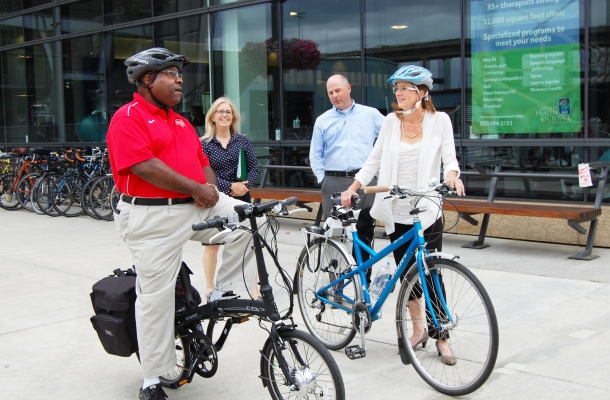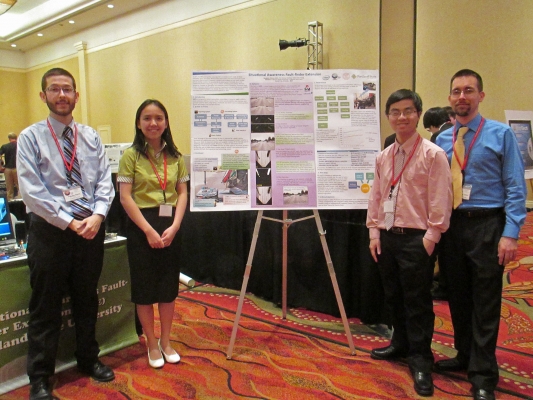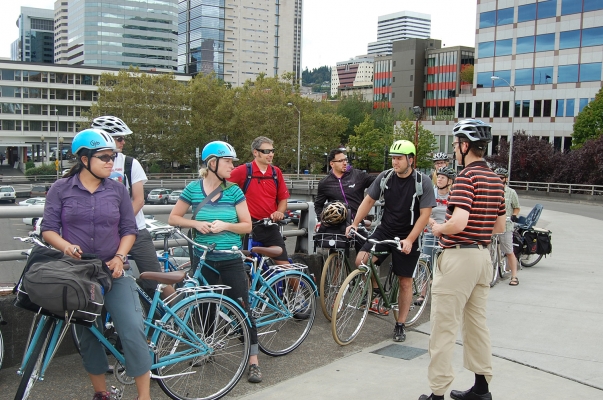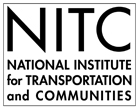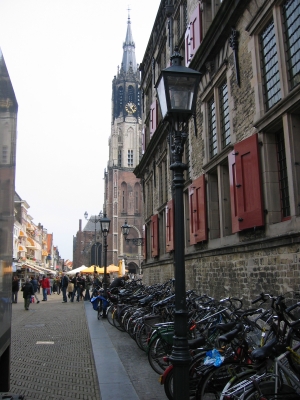Bicycle and pedestrian safety has emerged as a top priority for U.S. Transportation Secretary Anthony Foxx and the Department of Transportation. With this in mind, the department’s top research official visited Portland State University, home to the U.S. DOT-designated national center for livable communities.
Greg Winfree, the assistant secretary for research and technology, visited Portland State’s transportation research and education center June 13. Center Director Jennifer Dill and researcher Christopher Monsere gave Winfree a tour of the center’s living laboratory: Portland’s active transportation infrastructure.
Winfree, an advocate for improving safety for vulnerable road users, explored the city’s various bicycle safety efforts, including bike boulevards, protected bike lanes, bike boxes, bike-specific signals and signage. He also learned of pedestrian research involving traffic signals, crossings and...
Read more
